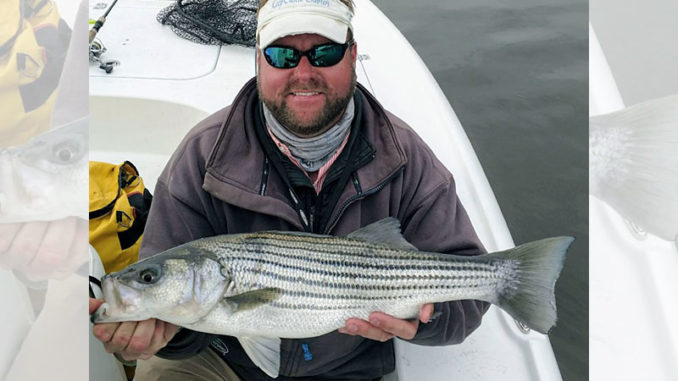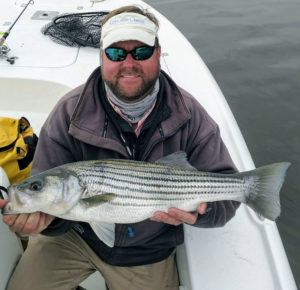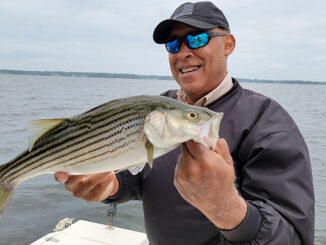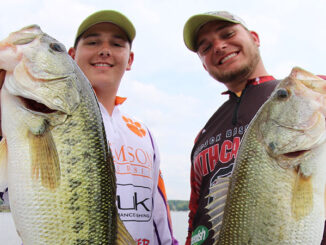
The mild fall weather means shallow water for rockfish
With North Carolina experiencing a mild fall, Ashley King of New Bern’s Keep Casting Charters thinks New Bern stripers — aka “rockfish” — may be in much-shallower water than usual in December, oriented to mid-depth ranges of 8 to 10 feet around ledges along channel breaks instead of on the bottom.
King (910-389-4118) uses a side-imaging depth-finding unit to detect fish in the shallows, near concrete bridge pilings that support highways across the Neuse and Trent rivers near New Bern and on the edges of ledges upstream in both rivers.
“In the past, stripers traditionally showed up Thanksgiving week,” he said. “Using my electronics is a key for me. I’ll look at shallow water then move all the way out to 17 feet as it gets colder. I troll in 10 to 12 feet of water, mostly 12 feet because I like pulling deep-diving X-RD 10 (lures) that run 10 feet.”
Once he gets a few reaction bites from stripers, he casts the same baits in white clown or hot steel colors.
“I paint up some special color combinations using fingernail polish,” he said. “I also use big MirrOlures and paint them my own colors.”
Mimic the local baitfish
The idea is to mimic large baitfish, specifically menhaden.

When the mercury drops into the 40s, stripers will drop straight to the bottom. That’s when King casts Z-Man Jerk Shads or soft-plastic paddletail grubs and bounces them off the bottom.
“The side-imaging radar is one of my seatrout tricks,” he said. “I’ll throw a 5- to 6-inch long Jerk Shad, Spro XL Little Johns or MirrOlures (in shallow water). If (stripers) are deep, I’ll vary between a shad-like lure that weighs 5/16- or 3/8-ounce. When I go up the Neuse, I’ll throw 1/2-ounce or more weighted grubs to combat the current. That’s my cold-water tactic.”
Late-falls stripers usually average between 18 and 22 inches long, then grow as the year stretches toward January, sometimes reaching 25 to 30 inches.





Be the first to comment